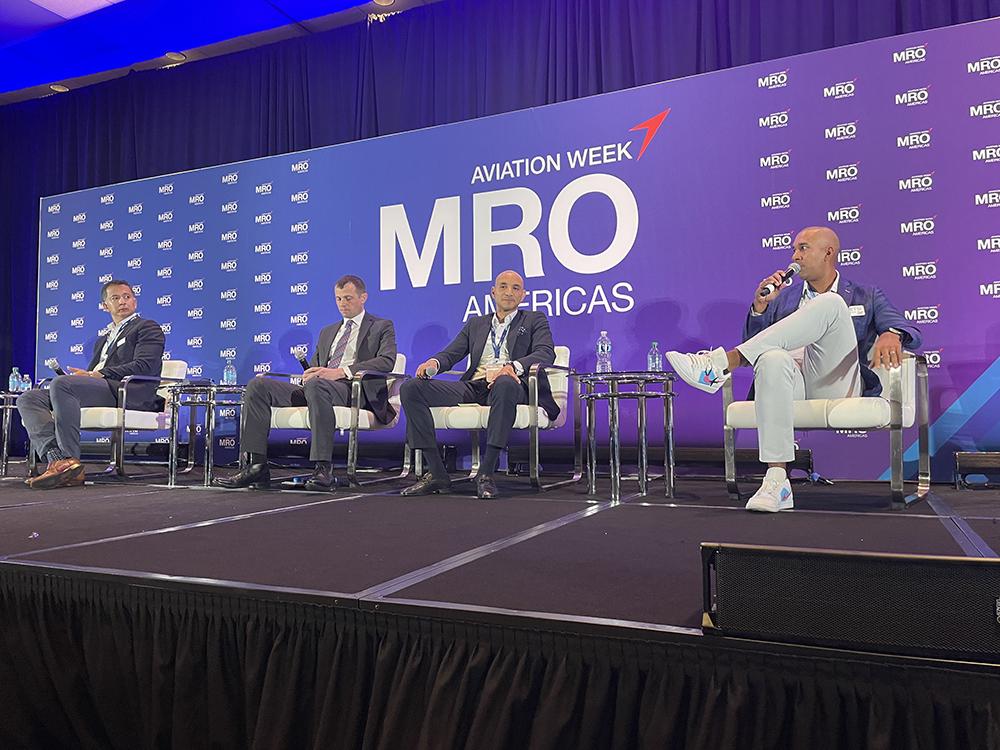
From left: Rahul Ghai, senior vice president and chief digital and technology officer at AAR; Hamish Guthrie, VP of aftermarket operations in North America for Pratt & Whitney; Ismail Mokabel, president and COO of MHI RJ Aviation Group; and Suresh Narayanan, CEO of JetsMRO.
Hiring, training and supporting technicians to embrace the culture of an organization could be key in addressing the juniority challenge facing the MRO industry, according to stakeholders at MRO Americas 2025.
As large-scale retirements across the board in the next decade compound the staffing challenges caused by the impact of COVID-19, a large proportion of the workforce have less experience than previously.
According to the results of an audience poll during a panel on the juniority issue, 63% said more than 40% of their company’s MRO workforce has five years of experience or less. And, according to panelists, ensuring a company focuses on culture from recruitment to training is a major part of the solution.
“We have to train people into our culture,” said Hamish Guthrie, Pratt & Whitney’s vice president of aftermarket operations in North America. “We’re continually supporting people with their education and improving their skillset. You can turn someone from having a job to having a multi-year career.
In response to discussion about how some MRO companies have noted that new technicians are lacking soft skills, Guthrie continued: “If people are excited to be in the aviation industry we can build on that. We can train the soft skills.”
Suresh Narayanan, CEO of JetsMRO, outlined how his organization is using artificial intelligence (AI) to support this cultural transition.
“We use AI for culture tests and skills tests for technicians,” he said. “It doesn’t matter if we hire the best technician, but if they’re not a good fit for the organization then you’re still going to have a retention problem.
“Motivation is a huge part of it; are we exciting people to be aircraft mechanics? There’s a huge difference. We want those folks who smile when they’re around an engine.”
Rahul Ghai, senior vice president and chief digital and technology officer at AAR, also discussed the role of technologies such as augmented reality and virtual reality, which resonate more with digital natives as they enter the workforce.
“Young people are walking in from a digital world and if you hand them a piece of paper it’s a short circuit,” he said.
Technology can help people to be both “more satisfied” and “more effective,” he added. “You can use it to eliminate processes. The more time people spend waiting, the more frustrated they become, and in turn it also helps you to create a safer product.”
Ismail Mokabel, president chief operating officer of MHIRJ Aviation Group, added that the industry would be operating in a “juniorism paradigm for a long time.”
He said: “Culture is big; how do you preserve the culture that carries your quality and safety? It’s about taking the tribal knowledge your organization has built up and institutionalising it.”
However, Mokabel noted that “Gen Z is different” and will require a fresh approach.
“There’s a culture collision and we need to find a way to bridge that, ensuring that the culture of rigor and safety first is embedded.”





